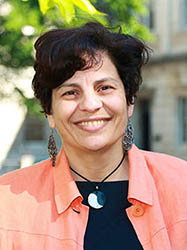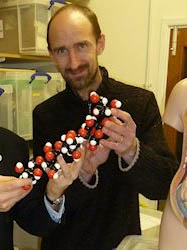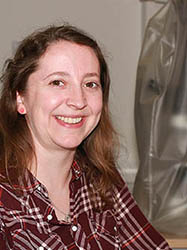The Seismin Project
About the SEISMIN project:
The Earth is a dynamic planet with a changing surface partly shaped by processes in its deep interior, which control earthquakes, volcanoes and the formation of mountain ranges. The Earth's mantle is divided into the uppermost mantle and transition zone (at depths of ~50-660 km beneath the surface), followed by the lower mantle (~660-2891 km). Flow in the mantle drives plate tectonics, one of the features distinguishing our planet from others.
However, there is much that we do not know about the Earth's mantle:
- What are the scales of variation in the properties of the Earth?
- Is variation in the structure of the mantle due to temperature and/or chemical composition?
- In what directions does mantle flow?
Recent developments in seismology, thermodynamic modelling and rock physics have the potential to help solve these questions. Modern high performance computing is enabling the efficient analysis and modelling of freely available large-scale sets of seismic data from around the world allowing us to generate increasingly detailed images of the Earth's interior. Progress in rock and mineral physics laboratory experiments, along with new developments in thermodynamic theory, now allow the construction of realistic models of planetary interiors that are thermodynamically self-consistent.
The use of novel techniques to better understand the Earth's deep interior...
As a result of the joint use of these different techniques, properties of the Earth that were very difficult to estimate in the past are within reach today. Intrinsic seismic attenuation (the amplitude loss of propagating seismic waves due to internal friction or anelastic processes) is particularly interesting, giving unique insight about temperature, chemical composition and the presence of fluids in the Earth's mantle when jointly interpreted using seismology, mineral/rock physics and geodynamics. However, up to now, seismic attenuation has received relatively little attention, and efforts for such integrated studies of the Earth's interior have been rare and limited. This project addresses these issues, with the aim of substantially advancing our fundamental understanding of the physical and chemical processes occurring in the Earth's interior, notably in the uppermost mantle and transition zone. We will achieve this by assembling a new massive seismic dataset, which will be modelled and used for the first time along with novel thermodynamical and rock physics information in a fully consistent way, to build new global 3-D images of attenuation and seismic speed in the Earth's mantle, and infer mantle's temperature, chemical composition and flow. This will help us deduce the scale, distribution and mechanisms responsible for variations in Earth's properties and attenuation in the upper mantle and transition zone, leading to an improved understanding of the dynamics of this key component of the deep Earth.
See who's working behind the scenes:
Dr Ana Ferreira
Lead Principal Investigator
I study deep Earth structure and earthquake source processes to obtain an integrated understanding of the processes controlling the dynamic behaviour of our planet from the surface down to the lowermost mantle.

Prof Carolina Lithgow-Bertelloni
Co - Lead Principal Investigator
My research is geared towards understanding the connection between the dynamics of Earth's interior and their surface expression, including the influence of dynamics on surface deformation and topography.
Prof Lars Stixrude
Co - Lead Principal Investigator
Professor Stixrude's research program seeks to understand large-scale planetary processes through investigations of the fundamental atomic-scale physics of Earth- and planet-forming materials.

Dr Phil Smith
TSN Coordinator
Graduating in 1990 with a 2(i) in Newcastle, he moved to the John Innes Centre (JIC) running TSN, having completed his PhD and held a post-doc position at the JIC. .
Dr Fabio Crameri
Research Associate
Dr. Fabio Crameri’s research focusses on the dynamics of large-scale geophysical processes, like lithosphere-scale deformation, global mantle convection and the interaction between mantle dynamics and surface topography.

Dr Keely O'Farrell
Research Associate
My thesis work has been on numerical models of mantle convection. Specifically, I used two different convection codes, one in spherical shell geometry and one in Cartesian geometry, to model mantle convection in a range of systems with different parameters, thereby mimicking any number of Earth-like planets, or super-Earths (terrestrial planets with 1-10 Earth masses).
Dr Lewis Schardonge
Research Associate
My research area focuses on the study of seismic recordings in order to get constraints on the physical properties of the Earth, and to better understand its past, present and future evolution.


